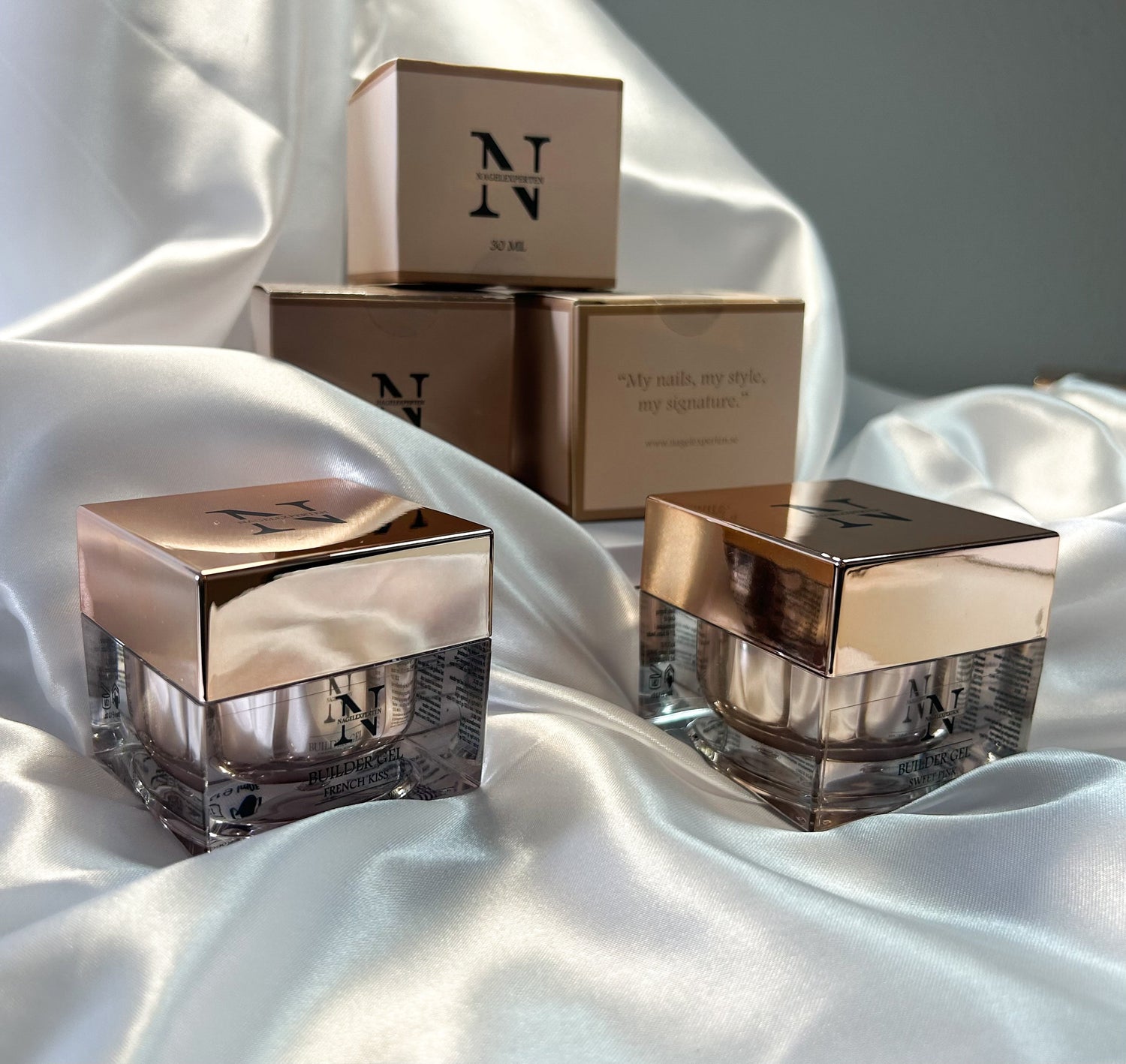
How to prevent artificial nails from coming off
It can be incredibly frustrating to have artificial nails of various types loosening at the edges or falling off completely. It's easy to first think that it's the products that are at fault, but in reality, 9.5 times out of 10, the problem lies in the preparation. There are many steps to master, but they are very important ones for applying nail material in the safest and most durable way possible.
Here are some common reasons why this happens and how to avoid it.
1. Poor Preparation of Natural Nail
One of the most critical steps before applying gel nails, acrylics, or gel polish is preparing the natural nail. If the nail plate is not properly cleaned or prepared, the gel may have difficulty adhering. Here are some factors to consider:
- Using moisturizing lotions: Make sure to skip the hand cream at least a day before you are going to do your nails. The cream provides moisture to the nails which can lead to peeling. Also, do not wash your hands right before you are going to put nail material on your nails.
- Oil, dirt and the right base product: The nail plate must be completely free of oil, dirt and moisture. Use a good dehydrator to ensure that the nail is clean and dry. Ph-bonder is good to use after the dehydrator if you have very oily nails, then primer should be used. Then rub in a very thin layer of base coat and cure for the recommended time.
- Roughen the nail surface: Roughening (buffing) the nail surface creates a base for the gel to adhere to. A smooth surface means the gel will not get enough grip and will most likely fall off very quickly.
- Proper removal of dead skin and cuticles: Learning the right technique to remove cuticles and dead skin around the nail is very important to have durable nails. I would say that without this your nails will not last many hours without peeling, so it doesn't matter how good the products you use because it will still peel if it is not done correctly.
- Avoid contact with the skin: Another important factor, firstly, this can lead to allergies which unfortunately can cause you to no longer be able to use artificial materials on your nails. And secondly, without exception, you will get relief almost immediately.
- Seal the edges: It is important to seal the edges of the nail carefully to prevent water or air from getting under the gel. This means that you need to seal the artificial material with a good topcoat. It is not enough to just brush top coat on the surface, you need to seal with top coat all the way around the artificial nail (but without it touching the skin around the nail). I usually use a thin liner brush to avoid coming into contact with the skin. It takes a lot of practice to get this right and before that you will have to expect some slippage.
- Dust from filing : After filing your nails, make sure all dust particles are thoroughly removed with a cleaner. Dust can create a barrier between the nail and the gel, leading to peeling and unevenness.
2. Incorrect application technique
The technique used when applying nail extensions and nail art materials plays a crucial role in durability:
- Thin Layers: If the layers are too thick, the gel cannot cure properly, which will cause the nails to peel. Thin, even layers are best. Walking around with material on your nails that has not cured properly can also cause allergies.
3. Curing problems
For the gel to cure properly, it must be exposed to UV or LED light for a certain amount of time:
- Lamp Efficiency: A lamp that is not powerful enough or that is incorrectly calibrated can cause the gel not to cure properly. Check that the lamp is working properly and replace the lamp regularly. If the lamp is used frequently, we recommend replacing it as often as once a year to ensure that it is working properly. A lamp loses a lot of its power after about 8000 hours. To cure our gels, you need a lamp with at least 45W.
- Curing time: Carefully follow the recommended curing time for each layer. Too short a time in the lamp can cause the gel to remain soft and to peel.
4. Quality of the Products
Not all gel products and acrylics are created equal. The quality of the products can vary greatly:
- Brand quality: Choose brands that are known for their good quality, read reviews and also check the product's contents to ensure that the product does not contain allergenic substances. For example, HEMA is a substance that is known to be allergenic.
- Use products from the same brand: Not all products are created to be used together. Each nail brand creates products that work optimally together, but we are still working with thermosetting plastics and should therefore always be used with caution. Some substances are simply not made to be mixed with each other, which can cause leakage and, in the worst case, cause chemical reactions that can lead to damage, nail loss and allergies.
5. Different Nail Types
Everyone has different nail types, and some nails may be more prone to peeling than others. For example, oily nails may have a harder time getting gel to stick to, while very dry nails may be brittle and crack more easily. Learning to identify different nail types and adjusting your preparation and application methods accordingly can help minimize problems.
6. Exposure to Chemicals
Daily exposure to harsh chemicals such as cleaners, solvents, and other household products can affect the durability of gel nails, acrylics, and gel polish. Using gloves when handling these products can help protect your nails and extend the durability of your nail treatment.
7. External factors
External factors such as lifestyle and environment can affect the durability of your gel nails.
-
Water : If you frequently expose your nails to water, for example by washing dishes without gloves, this can affect the durability of the gel.
-
Heavy use of your hands : If you use your hands a lot in work that involves a lot of friction or impact, such as crafts or gardening, this can lead to faster release.
Finally, we would like to emphasize the importance of never practicing on yourself or others before you have mastered these techniques on a mannequin. A lot of practice, education and following tutorials on YouTube and other platforms is very important to know how to apply thermosetting resins correctly in a safe and sustainable way.

